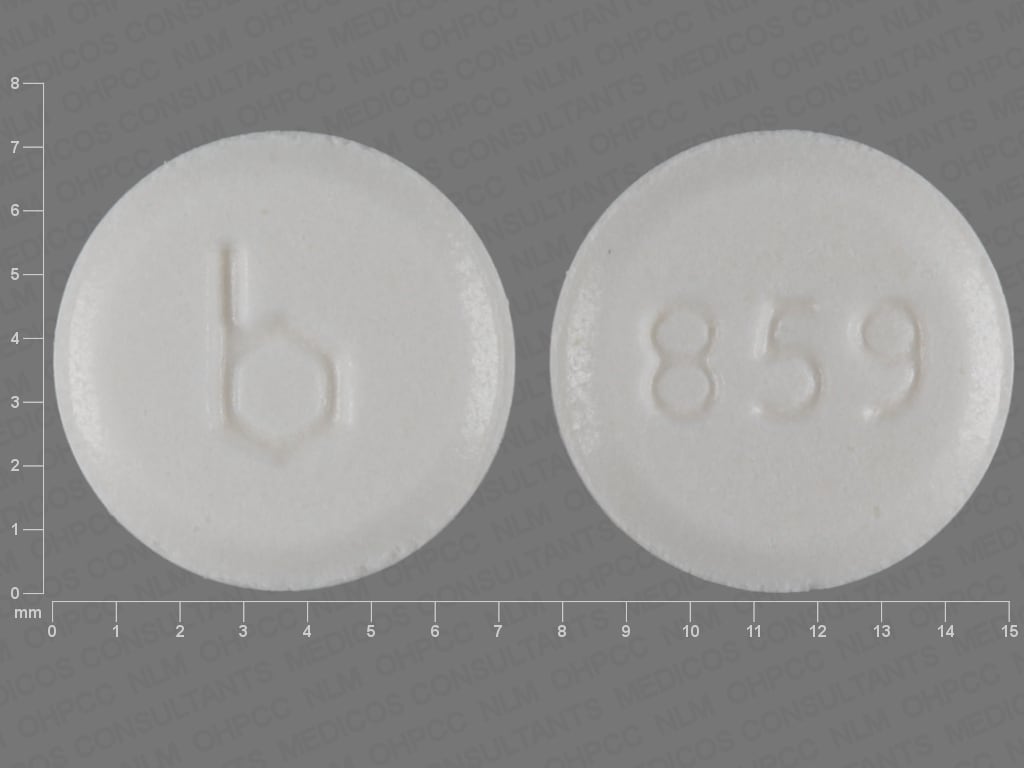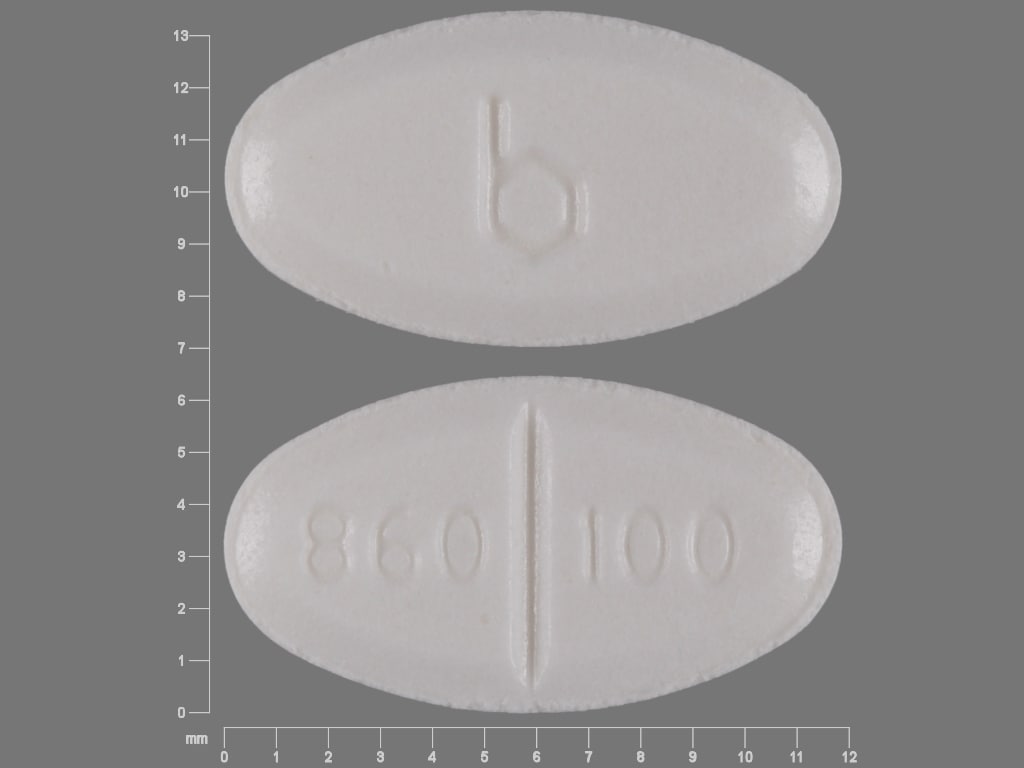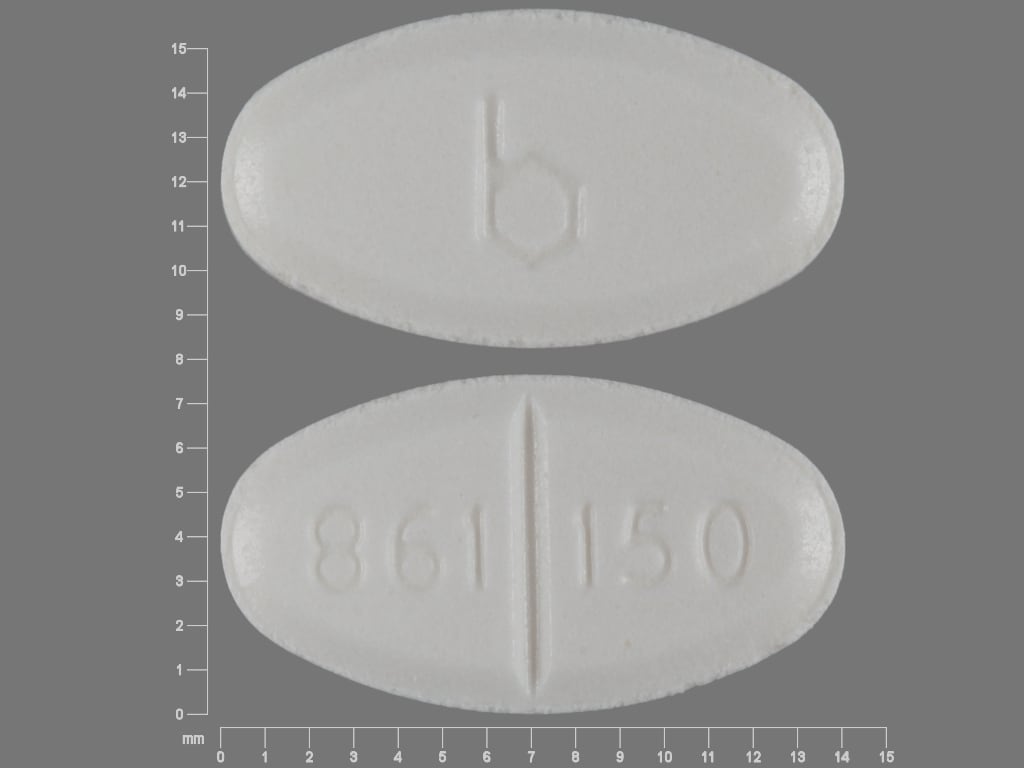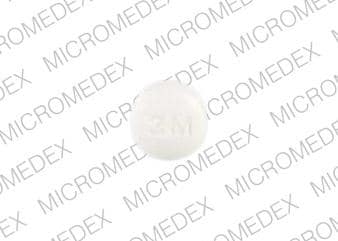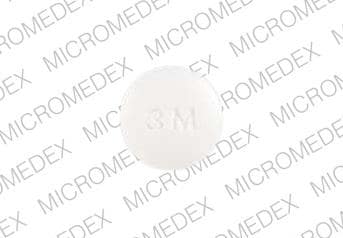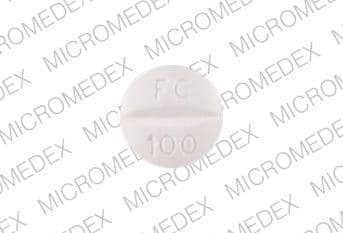Boxed Warning
Mortality:
Flecainide was included in the National Heart Lung and Blood Institute's Cardiac Arrhythmia Suppression Trial (CAST), a long-term, multicenter, randomized, double-blind study in patients with asymptomatic non-life-threatening ventricular arrhythmias who had an MI more than 6 days but less than 2 years previously. An excessive mortality or nonfatal cardiac arrest rate was seen in patients treated with flecainide compared with that seen in patients assigned to a carefully matched placebo-treated group. This rate was 5.1% for flecainide and 2.3% for the matched placebo. The average duration of treatment with flecainide in this study was 10 months.
The applicability of the CAST results to other populations (eg, those without recent MI) is uncertain, but at present, it is prudent to consider the risks of Class ΙC agents (including flecainide), coupled with the lack of any evidence of improved survival, generally unacceptable in patients without life-threatening ventricular arrhythmias, even if the patients are experiencing unpleasant, but not life-threatening, symptoms or signs.
Ventricular proarrhythmic effects in patients with atrial fibrillation/flutter:
A review of the world literature revealed reports of 568 patients treated with oral flecainide for paroxysmal atrial fibrillation/flutter (PAF). Ventricular tachycardia was experienced in 0.4% of these patients. Of 19 patients in the literature with chronic atrial fibrillation (CAF), 10.5% experienced ventricular tachycardia (VT) or ventricular fibrillation (VF). Flecainide is not recommended for use in patients with CAF. Case reports of ventricular proarrhythmic effects in patients treated with flecainide for atrial fibrillation/flutter have included increased premature ventricular contractions (PVCs), VT, VF, and death.
As with other Class Ι agents, patients treated with flecainide for atrial flutter have been reported with 1:1 atrioventricular conduction due to slowing the atrial rate. A paradoxical increase in the ventricular rate also may occur in patients with atrial fibrillation who receive flecainide. Concomitant negative chronotropic therapy such as digoxin or beta-blockers may lower the risk of this complication.
Dosage Forms
Excipient information presented when available (limited, particularly for generics); consult specific product labeling.
Tablet, Oral, as acetate:
Generic: 50 mg, 100 mg, 150 mg
Pharmacology
Mechanism of Action
Class Ic antiarrhythmic; slows conduction in cardiac tissue by altering transport of ions across cell membranes; causes slight prolongation of refractory periods; decreases the rate of rise of the action potential without affecting its duration; increases electrical stimulation threshold of ventricle, His-Purkinje system; possesses local anesthetic and moderate negative inotropic effects
Pharmacokinetics/Pharmacodynamics
Absorption
Oral: Nearly complete; decreased when administered with milk
Excretion
Urine (30% [range: 10% to 50%] as unchanged drug); feces (5%)
Time to Peak
Serum: ~3 hours (range: 1 to 6 hours)
Half-Life Elimination
Newborns: Up to ≤29 hours; 3 months: 11 to 12 hours; 12 months: 6 hours
Children: ~8 hours
Adolescents 12 to 15 years: ~11 to 12 hours
Adults: ~20 hours (range: 12 to 27 hours); increased in patients with heart failure (NYHA Class III) or renal dysfunction
Protein Binding
~40%
Use: Labeled Indications
Paroxysmal atrial fibrillation/flutter and paroxysmal supraventricular tachycardias (prevention): Prevention of paroxysmal atrial fibrillation/flutter associated with disabling symptoms and paroxysmal supraventricular tachycardias (PSVT), including atrioventricular nodal reentrant tachycardia, atrioventricular reentrant tachycardia, and other supraventricular tachycardias of unspecified mechanism associated with disabling symptoms in patients without structural heart disease.
Guideline recommendations: Due to safety risks, flecainide should be reserved for symptomatic supraventricular tachycardias (SVTs) in patients without structural or ischemic heart disease who are not candidates for, or prefer not to undergo, catheter ablation and in whom other therapies have failed or are contraindicated (ACC/AHA/HRS [Page 2015]).
Ventricular arrhythmias (prevention): Prevention of documented life-threatening ventricular tachyarrhythmias (eg, sustained ventricular tachycardia) in patients without structural heart disease.
Guideline recommendations: Flecainide is an appropriate adjunctive therapy in patients with type 3 long QT syndrome or catecholaminergic polymorphic ventricular tachycardia who are already taking a maximally tolerated beta blocker but still experiencing symptoms (AHA/ACC/HRS [Al-Khatib 2017]; Benhorin 2000; Chorin 2018; Van der Werf 2011; Watanabe 2013)
Limitations of use: Use of flecainide is not recommended in patients with less severe ventricular arrhythmias, even if symptomatic. Because of the proarrhythmic effects of flecainide, its use should be reserved for patients in whom the benefits of treatment outweigh the risks. Flecainide should not be used in patients with chronic atrial fibrillation (not adequately studied) or recent MI. No evidence from controlled trials have demonstrated favorable effects of flecainide on survival or the incidence of sudden death.
Use: Off Label
Atrial fibrillation or flutter (pharmacologic cardioversion)byes
Data from a non-randomized trial in a risk-stratified population of patients with recurrent atrial fibrillation supports the use of flecainide in the treatment of patients with recurrent episodes of atrial fibrillation Alboni 2004.
Based on the 2014 American Heart Association/American College of Cardiology/Heart Rhythm Society (AHA/ACC/HRS) guideline for the management of patients with atrial fibrillation (AF), the use of flecainide in combination with an AV-nodal blocking agent (eg, beta blocker or non dihydropyridine calcium channel blocker) is effective and recommended for pharmacological cardioversion of AF or atrial flutter. Administration of flecainide (with a beta blocker or nondihydropyridine calcium channel blocker administered at least 30 minutes prior to flecainide), the “pill-in-the-pocket” approach, may also be used to terminate AF outside the hospital after it is observed that it is safe in a monitored setting for selected patients.
Fetal tachycardia, sustainedcyes
Data from retrospective studies of fetuses with tachycardia with or without hydrops suggest that flecainide via maternal administration may be beneficial for the treatment of fetal tachycardia Alsaied 2017, Ekiz 2018, Hill 2017, Jaeggi 2011, Sridharan 2016, Strizek 2016, Vigneswaran 2014.
Based on the American Heart Association Scientific Statement for the Diagnosis and Treatment of Fetal Cardiac Disease, flecainide may be considered for the in utero management of fetal supraventricular tachycardia (SVT) or atrial flutter with hydrops or ventricular dysfunction. Flecainide may also be considered for SVT without hydrops or ventricular dysfunction if heart rate is ≥200 bpm or other rare tachycardias with an average heart rate of ≥200 bpm. In addition, flecainide may be considered for fetal ventricular tachycardia (VT) with normal QTc with or without hydrops, but is contraindicated for the treatment of fetal VT when long QT syndrome is suspected or confirmed AHA [Donofrio 2014].
Ventricular premature beatsyes
Based on the American Heart Association/American College of Cardiology/Heart Rhythm Society Guideline for the management of patients with ventricular arrhythmias and the prevention of sudden cardiac death, flecainide is effective for suppressing ventricular premature beats. Clinical experts recommend beta blockers as first line pharmacologic therapy due to a safer side effect profile Manolis 2018.
Contraindications
Hypersensitivity to flecainide or any component of the formulation; pre-existing second- or third-degree AV block or with right bundle branch block when associated with a left hemiblock (bifascicular block) (except in patients with a functioning artificial pacemaker); cardiogenic shock; concurrent use of ritonavir
According to the American College of Cardiology/American Heart Association/European Society of Cardiology, the use of flecainide is considered contraindicated in patients with structural heart disease (ACC/AHA/HRS [Page 2015]; AHA/ACC/HRS [Al-Khatib 2017])
Dosage and Administration
Dosing: Adult
Fetal tachycardia, sustained (maternal/transplacental administration) (off-label use): Oral: 100 to 300 mg/day in divided doses administered every 8 to 12 hours (AHA [Donofrio 2014]). Adjust dose to fetal response. Some studies targeted maternal blood levels between 0.2 and 1 mcg/mL. Maximum dose: 450 mg/day (Alsaied 2017).
Ventricular arrhythmias (prevention): Oral: Initial: 50 to 100 mg every 12 hours; increase by 50 mg twice daily at 4-day intervals; maximum: 400 mg/day (AHA/ACC/HRS [Al-Khatib 2017]; Benhorin 2000; Chorin 2018; van der Werf 2011; Watanabe 2013). Some patients inadequately controlled with or intolerant to dosing every 12 hours may require dosing every 8 hours. Note: Initiate therapy in a hospital setting in patients with sustained ventricular tachycardia. Use of higher initial doses and more rapid dosage adjustments have resulted in an increased incidence of proarrhythmic events and congestive heart failure, particularly during the first few days. Do not use a loading dose.
Paroxysmal atrial fibrillation/flutter and paroxysmal supraventricular tachycardias (prevention): Oral: Initial: 50 mg every 12 hours; increase by 50 mg twice daily at 4-day intervals; maximum total dose: 300 mg. The AHA/ACC/HRS atrial fibrillation guidelines recommend a maximum total daily dose of 400 mg (AHA/ACC/HRS [January 2014]).
Ventricular premature beats (off-label use): Oral: 50 to 200 mg every 12 hours (AHA/ACC/HRS [Al-Khatib 2017]). According to the prescribing information, may increase by 50 mg twice daily at 4-day intervals; maximum: 400 mg/day.
Atrial fibrillation or flutter (pharmacological cardioversion) (off-label dose): Oral: Note: May be used on an outpatient basis (“Pill-in-the-pocket”). An initial inpatient cardioversion trial should have been successful before sending patient home on this approach. Patient must be taking an AV nodal-blocking agent (eg, beta-blocker, nondihydropyridine calcium channel blocker) prior to initiation of antiarrhythmic (AHA/ACC/HRS [January 2014]; Alboni 2004).
<70 kg: 200 mg; may not repeat in ≤24 hours
≥70 kg: 300 mg; may not repeat in ≤24 hours
Conversion from another antiarrhythmic agent: Allow for 2 to 4 half-lives of the other agent after discontinuation to pass before initiating flecainide therapy.
Dosage adjustment for concomitant therapy: Amiodarone: Reduce the flecainide dose by 50% and monitor the patient closely for adverse effects; monitoring of plasma concentrations is strongly recommended to guide dosage.
Dosing: Geriatric
Refer to adult dosing.
Dosing: Pediatric
Arrhythmias:
BSA-directed dosing: Use caution with dose titration, as small change in dose may result in disproportionate increase in plasma concentrations.
Infants ≤6 months: Oral: Initial: 50 mg/m2/day divided every 8 to 12 hours; may titrate dose at 4-day intervals; maximum daily dose: 200 mg/m2/day; higher doses have been associated with an increased risk of proarrhythmic effects.
Infants >6 months, Children, and Adolescents: Oral: Initial: 100 mg/m2/day divided every 8 to 12 hours; may titrate dose at 4-day intervals; maximum daily dose: 200 mg/m2/day; higher doses have been associated with an increased risk of proarrhythmic effects.
Weight-based dosing: Limited data available; dosing regimens variable: Infants, Children, and Adolescents: Oral: Initial: 1 to 3 mg/kg/day divided every 8 hours; may titrate dose at 4-day intervals; usual maintenance range: 3 to 6 mg/kg/day (Park 2014); an average effective dose of 4 mg/kg/day was reported in an expert analysis of literature and clinical experience (Perry 1992); maximum daily dose: 8 mg/kg/day (Perry 1992); higher doses have been associated with an increased risk of proarrhythmic effects.
Extemporaneously Prepared
20 mg/mL Oral Suspension (ASHP Standard Concentration) (ASHP 2017)
A 20 mg/mL oral liquid suspension may be made from tablets and one of three different vehicles (cherry syrup, a 1:1 mixture of Ora-Sweet and Ora-Plus, or a 1:1 mixture of Ora-Sweet SF and Ora-Plus). Crush twenty-four 100 mg tablets in a mortar and reduce to a fine powder. Add 20 mL of the chosen vehicle and mix to a uniform paste; mix while adding the vehicle in incremental proportions to almost 120 mL; transfer to a calibrated bottle, rinse mortar with vehicle, and add quantity of vehicle sufficient to make 120 mL. Label “shake well” and “protect from light.” Stable for 60 days when stored in amber plastic prescription bottles in the dark at room temperature or refrigerated.
Allen LV, Erickson III MA. Stability of baclofen, captopril, diltiazem, hydrochloride, dipyridamole, and flecainide acetate in extemporaneously compounded oral liquids. Am J Health Syst Pharm. 1996;53:2179-2184.8879325
Administration
Oral: When used for the management of fetal tachycardia (maternal/transplacental administration; off-label use), oral doses are administered to the mother.
Storage
Store at 20°C to 25°C (68°F to 77°F) in a tight, light-resistant container
Flecainide Images
Drug Interactions
Abiraterone Acetate: May increase the serum concentration of CYP2D6 Substrates (High risk with Inhibitors). Management: Avoid concurrent use of abiraterone with CYP2D6 substrates that have a narrow therapeutic index whenever possible. When concurrent use is not avoidable, monitor patients closely for signs/symptoms of toxicity. Consider therapy modification
Amiodarone: May enhance the QTc-prolonging effect of Flecainide. Amiodarone may increase the serum concentration of Flecainide. Management: Decrease flecainide dose by 50%. Monitor for QTc interval prolongation and ventricular arrhythmias, and consider monitoring for elevated flecainide concentrations. Patients with additional risk factors for QTc prolongation may be at even higher risk. Consider therapy modification
Antihepaciviral Combination Products: May increase the serum concentration of Flecainide. Management: Canadian labeling recommends avoiding this combination. Monitor therapy
Asunaprevir: May increase the serum concentration of Flecainide. Avoid combination
Carbonic Anhydrase Inhibitors: May increase the serum concentration of Flecainide. Exceptions: Brinzolamide; Dorzolamide. Monitor therapy
CloBAZam: May increase the serum concentration of CYP2D6 Substrates (High risk with Inhibitors). Monitor therapy
Cobicistat: May increase the serum concentration of CYP2D6 Substrates (High risk with Inhibitors). Monitor therapy
CYP2D6 Inhibitors (Moderate): May decrease the metabolism of CYP2D6 Substrates (High risk with Inhibitors). Monitor therapy
CYP2D6 Inhibitors (Strong): May decrease the metabolism of CYP2D6 Substrates (High risk with Inhibitors). Consider therapy modification
Dacomitinib: May increase the serum concentration of CYP2D6 Substrates (High risk with Inhibitors). Management: Avoid concurrent use of dacomitinib with CYP2D6 subtrates that have a narrow therapeutic index. Consider therapy modification
Darunavir: May increase the serum concentration of CYP2D6 Substrates (High risk with Inhibitors). Monitor therapy
Digoxin: Flecainide may increase the serum concentration of Digoxin. Monitor therapy
Domperidone: QT-prolonging Agents (Moderate Risk) may enhance the QTc-prolonging effect of Domperidone. Management: Consider alternatives to this drug combination. If combined, monitor for QTc interval prolongation and ventricular arrhythmias. Patients with additional risk factors for QTc prolongation may be at even higher risk. Consider therapy modification
Etravirine: May decrease the serum concentration of Flecainide. Monitor therapy
Fexinidazole [INT]: May enhance the QTc-prolonging effect of QT-prolonging Agents (Moderate Risk). Avoid combination
Fosamprenavir: May increase the serum concentration of Flecainide. Management: Concurrent use of ritonavir-boosted fosamprenavir with flecainide is contraindicated. The use of non-ritonavir-boosted fosamprenavir with flecainide is not specifically contraindicated but should only be undertaken with caution. Avoid combination
Haloperidol: QT-prolonging Class IC Antiarrhythmics (Moderate Risk) may enhance the QTc-prolonging effect of Haloperidol. Management: Monitor for QTc interval prolongation and ventricular arrhythmias when these agents are combined. Patients with additional risk factors for QTc prolongation may be at even higher risk. Monitor therapy
Imatinib: May increase the serum concentration of CYP2D6 Substrates (High risk with Inhibitors). Monitor therapy
Lacosamide: QT-prolonging Class IC Antiarrhythmics (Moderate Risk) may enhance the adverse/toxic effect of Lacosamide. Specifically the risk for bradycardia, ventricular tachyarrhythmias, or a prolonged PR interval may be increased. Monitor therapy
Lumefantrine: May increase the serum concentration of CYP2D6 Substrates (High risk with Inhibitors). Monitor therapy
Mirabegron: May increase the serum concentration of Flecainide. Management: Monitor clinical response to flecainide closely. Dose adjustment may be necessary. Canadian mirabegron labeling recommends restricting the maximum adult mirabegron dose to 25 mg/day in patients receiving flecainide. Monitor therapy
Ondansetron: QT-prolonging Class IC Antiarrhythmics (Moderate Risk) may enhance the QTc-prolonging effect of Ondansetron. Management: Monitor for QTc interval prolongation and ventricular arrhythmias when these agents are combined. Patients with additional risk factors for QTc prolongation may be at even higher risk. Monitor therapy
Panobinostat: May increase the serum concentration of CYP2D6 Substrates (High risk with Inhibitors). Monitor therapy
Peginterferon Alfa-2b: May decrease the serum concentration of CYP2D6 Substrates (High risk with Inhibitors). Peginterferon Alfa-2b may increase the serum concentration of CYP2D6 Substrates (High risk with Inhibitors). Monitor therapy
Pentamidine (Systemic): QT-prolonging Class IC Antiarrhythmics (Moderate Risk) may enhance the QTc-prolonging effect of Pentamidine (Systemic). Management: Monitor for QTc interval prolongation and ventricular arrhythmias when these agents are combined. Patients with additional risk factors for QTc prolongation may be at even higher risk. Monitor therapy
Perhexiline: CYP2D6 Substrates (High risk with Inhibitors) may increase the serum concentration of Perhexiline. Perhexiline may increase the serum concentration of CYP2D6 Substrates (High risk with Inhibitors). Monitor therapy
Pimozide: May enhance the QTc-prolonging effect of QT-prolonging Agents (Moderate Risk). Avoid combination
Pindolol: Flecainide may enhance the bradycardic effect of Pindolol. The negative inotropic effects of Pindolol may also be enhanced. Monitor therapy
QT-prolonging Agents (Highest Risk): May enhance the QTc-prolonging effect of Flecainide. Management: Consider alternatives to this combination. Patients with other risk factors (eg, older age, female sex, bradycardia, hypokalemia, hypomagnesemia, heart disease, and higher drug concentrations) are likely at greater risk for these toxicities. Exceptions: Amiodarone. Consider therapy modification
QT-prolonging Antidepressants (Moderate Risk): QT-prolonging Class IC Antiarrhythmics (Moderate Risk) may enhance the QTc-prolonging effect of QT-prolonging Antidepressants (Moderate Risk). Management: Monitor for QTc interval prolongation and ventricular arrhythmias when these agents are combined. Patients with additional risk factors for QTc prolongation may be at even higher risk. Monitor therapy
QT-prolonging Antipsychotics (Moderate Risk): QT-prolonging Class IC Antiarrhythmics (Moderate Risk) may enhance the QTc-prolonging effect of QT-prolonging Antipsychotics (Moderate Risk). Management: Monitor for QTc interval prolongation and ventricular arrhythmias when these agents are combined. Patients with additional risk factors for QTc prolongation may be at even higher risk. Exceptions: Pimozide. Monitor therapy
QT-prolonging Class IC Antiarrhythmics (Moderate Risk): May enhance the QTc-prolonging effect of other QT-prolonging Class IC Antiarrhythmics (Moderate Risk). Management: Monitor for QTc interval prolongation and ventricular arrhythmias when these agents are combined. Patients with additional risk factors for QTc prolongation may be at even higher risk. Monitor therapy
QT-prolonging Kinase Inhibitors (Moderate Risk): QT-prolonging Class IC Antiarrhythmics (Moderate Risk) may enhance the QTc-prolonging effect of QT-prolonging Kinase Inhibitors (Moderate Risk). Management: Monitor for QTc interval prolongation and ventricular arrhythmias when these agents are combined. Patients with additional risk factors for QTc prolongation may be at even higher risk. Monitor therapy
QT-prolonging Miscellaneous Agents (Moderate Risk): May enhance the QTc-prolonging effect of QT-prolonging Class IC Antiarrhythmics (Moderate Risk). Management: Monitor for QTc interval prolongation and ventricular arrhythmias when these agents are combined. Patients with additional risk factors for QTc prolongation may be at even higher risk. Exceptions: Domperidone. Monitor therapy
QT-prolonging Moderate CYP3A4 Inhibitors (Moderate Risk): QT-prolonging Class IC Antiarrhythmics (Moderate Risk) may enhance the QTc-prolonging effect of QT-prolonging Moderate CYP3A4 Inhibitors (Moderate Risk). Management: Monitor for QTc interval prolongation and ventricular arrhythmias when these agents are combined. Patients with additional risk factors for QTc prolongation may be at even higher risk. Monitor therapy
QT-prolonging Quinolone Antibiotics (Moderate Risk): May enhance the QTc-prolonging effect of QT-prolonging Class IC Antiarrhythmics (Moderate Risk). Management: Monitor for QTc interval prolongation and ventricular arrhythmias when these agents are combined. Patients with additional risk factors for QTc prolongation may be at even higher risk. Monitor therapy
QT-prolonging Strong CYP3A4 Inhibitors (Moderate Risk): QT-prolonging Class IC Antiarrhythmics (Moderate Risk) may enhance the QTc-prolonging effect of QT-prolonging Strong CYP3A4 Inhibitors (Moderate Risk). Management: Monitor for QTc interval prolongation and ventricular arrhythmias when these agents are combined. Patients with additional risk factors for QTc prolongation may be at even higher risk. Monitor therapy
Ritonavir: May increase the serum concentration of Flecainide. Avoid combination
Simeprevir: May increase the serum concentration of Flecainide. Monitor therapy
Sodium Bicarbonate: May diminish the arrhythmogenic effect of Flecainide. Sodium Bicarbonate may increase the serum concentration of Flecainide. Monitor therapy
Sodium Lactate: May increase the serum concentration of Flecainide. Monitor therapy
Tipranavir: May increase the serum concentration of Flecainide. Avoid combination
Tobacco (Smoked): May decrease the serum concentration of Flecainide. Monitor therapy
Tromethamine: May increase the serum concentration of Flecainide. Monitor therapy
Verapamil: May enhance the adverse/toxic effect of Flecainide. In particular, this combination may significantly impair myocardial contractility and AV nodal conduction. Monitor therapy
Adverse Reactions
>10%:
Central nervous system: Dizziness (19% to 30%)
Ocular: Visual disturbances (16%)
Respiratory: Dyspnea (~10%)
1% to 10%:
Cardiovascular: Palpitation (6%), chest pain (5%), edema (3.5%), tachycardia (1% to 3%), proarrhythmic (4% to 12%), sinus node dysfunction (1.2%), syncope
Central nervous system: Headache (4% to 10%), fatigue (8%), nervousness (5%) additional symptoms occurring at a frequency between 1% and 3%: fever, malaise, hypoesthesia, paresis, ataxia, vertigo, somnolence, tinnitus, anxiety, insomnia, depression
Dermatologic: Rash (1% to 3%)
Gastrointestinal: Nausea (9%), constipation (1%), abdominal pain (3%), anorexia (1% to 3%), diarrhea (0.7% to 3%)
Neuromuscular & skeletal: Tremor (5%), weakness (5%), paresthesia (1%)
Ophthalmic: Diplopia (1% to 3%), blurred vision
<1% (Limited to important or life-threatening): Bradycardia, paradoxical increase in ventricular rate in atrial fibrillation/flutter, heart block, increased P-R, QRS duration, ventricular arrhythmia, CHF, flushing, AV block, angina, hyper-/hypotension, amnesia, confusion, decreased libido, depersonalization, euphoria, apathy, nervousness, twitching, neuropathy, weakness, taste disturbance, urticaria, exfoliative dermatitis, pruritus, alopecia, flatulence, xerostomia, blood dyscrasias, possible hepatic dysfunction, paresthesia, eye pain, photophobia, bronchospasm, pneumonitis, swollen lips/tongue/mouth, arthralgia, myalgia, polyuria, urinary retention, leukopenia, granulocytopenia, thrombocytopenia, metallic taste, alters pacing threshold
Postmarketing and/or case reports: Tardive dyskinesia, corneal deposits
Warnings/Precautions
Concerns related to adverse effects:
- Proarrhythmic effects: [US Boxed Warning]: Proarrhythmic effects (including increased premature ventricular contractions, ventricular tachycardia, ventricular fibrillation, and death) have been reported in patients with atrial fibrillation/fibrillation who received flecainide; use is not recommended for patients with chronic atrial fibrillation. Flecainide can cause new or worsened supraventricular or ventricular arrhythmias in all patients; effect is dose-related. Patients with sustained ventricular tachycardia and serious underlying heart disease are at an increased risk; initiation of therapy should occur in a hospital setting.
Disease-related concerns:
- Atrial fibrillation (chronic): Use is not recommended in patients with chronic atrial fibrillation due to an increased risk of life-threatening ventricular arrhythmias.
- Atrial flutter: Appropriate use: [US Boxed Warning]: When treating atrial flutter, 1:1 atrioventricular conduction may occur; preemptive negative chronotropic therapy (eg, digoxin, beta-blockers) may lower the risk.
- Conduction disturbances: Dose-related increases in PR, QRS, and QT intervals occur. If second- or third-degree AV block, or right bundle branch block associated with a left hemiblock occur, flecainide therapy should be discontinued unless a temporary or implanted ventricular pacemaker is in place to ensure an adequate ventricular rate. Use with extreme caution in patients with sick sinus syndrome; treatment with flecainide may result in sinus bradycardia, sinus pause, or sinus arrest. There have also been rare cases of torsade de pointes-type arrhythmia associated with flecainide.
- Electrolyte imbalance: Correct electrolyte disturbances, especially hypokalemia or hypomagnesemia, prior to use and throughout therapy.
- Heart disease: Avoid use in patients with heart failure; may precipitate or exacerbate condition, increase the risk of proarrhythmia, and contribute to an increased risk of mortality (ACCF/AHA [Yancy 2013]). According to the manufacturer, use with extreme caution in patients with structural heart disease as the risk of death and cardiac events may be increased. Avoid use in patients with structural or ischemic heart disease (ACC/AHA/HRS [Page 2015]).
- Hepatic impairment: Use with caution in patients with significant hepatic impairment; benefit should outweigh risk. Consider careful monitoring during initiation of therapy. Dose titration should occur only after steady state has been achieved (≥4 days after initiation). Frequent plasma level monitoring is required in patients with severe hepatic impairment; if unavailable, use is not recommended.
- Renal impairment: Use with caution in patients with significant renal impairment. Frequent plasma level monitoring is required in patients with severe renal impairment; if unavailable, use is not recommended.
Concurrent drug therapy issues:
- Drug-drug interactions: Potentially significant interactions may exist, requiring dose or frequency adjustment, additional monitoring, and/or selection of alternative therapy. Consult drug interactions database for more detailed information.
Special populations:
- Pediatric: Small changes in dose may lead to disproportionate increases in plasma concentrations in pediatric patients. Following initiation of therapy or changes in dose, obtain plasma trough concentrations and ECG once steady state has been achieved (>5 doses after initiation or change); regular monitoring of trough concentrations and ECG is recommended by the manufacturer during the first year of therapy.
Other warnings/precautions:
- CAST trial: [US Boxed Warning]: In the Cardiac Arrhythmia Suppression Trial (CAST), recent (>6 days but <2 years ago) myocardial infarction patients with asymptomatic, non-life-threatening ventricular arrhythmias did not benefit and may have been harmed by attempts to suppress the arrhythmia with flecainide or encainide. An increased mortality or nonfatal cardiac arrest rate (7.7%) was seen in the active treatment group compared with patients in the placebo group (3%). The applicability of the CAST results to other populations is unknown. The risks of class 1C agents and the lack of improved survival make use in patients without life-threatening arrhythmias generally unacceptable.
- Pacemakers: Use with caution in patients with permanent pacemakers or temporary pacing wires; can increase endocardial pacing thresholds and suppress ventricular escape rhythms. Do not use in patients with existing poor thresholds or nonprogrammable pacemakers unless suitable pacing rescue is available. The pacing threshold in patients with pacemakers should be determined at baseline, 1 week after initiation and at regular intervals thereafter.
Monitoring Parameters
ECG, blood pressure, pulse, periodic serum trough concentrations, especially in patients with renal or hepatic impairment, concomitant administration of amiodarone and pediatric patients.
Pregnancy
Pregnancy Considerations
Flecainide crosses the placenta (Palmer 1990). Placental transfer is not decreased when fetal hydrops is present. Neonatal conduction abnormalities have been reported (AHA [Donofrio 2014]).
Untreated maternal arrhythmias may cause adverse events in the mother and fetus. Flecainide may be used for the ongoing management of pregnant women with highly symptomatic supraventricular tachycardia (SVT). The lowest effective dose is recommended; avoid use during the first trimester if possible (ACC/AHA/HRS [Page 2015]). Use is also recommended for the prevention of SVT in patients with Wolff-Parkinson-White (WPW) syndrome. Until more information is available, when prevention of SVT in patients without WPW syndrome, atrial tachycardia, or atrial fibrillation is needed in pregnancy, flecainide is generally reserved for use when other agents are not effective (ESC [Regitz-Zagrosek 2018]).
Flecainide (administered maternally) may be considered for the in utero management of fetal SVT or atrial flutter with hydrops or ventricular dysfunction. Flecainide may also be considered for SVT without hydrops or ventricular dysfunction if heart rate is ≥200 bpm, or other rare tachycardias with an average heart rate of ≥200 bpm. In addition, flecainide may be considered for fetal ventricular tachycardia (VT) with normal QTc with or without hydrops but is contraindicated for the treatment of fetal VT when long QT syndrome is suspected or confirmed (AHA [Donofrio 2014]).
Patient Education
What is this drug used for?
- It is used to treat certain types of abnormal heartbeats.
Frequently reported side effects of this drug
- Nausea
- Loss of strength and energy
- Headache
Other side effects of this drug: Talk with your doctor right away if you have any of these signs of:
- Chest pain
- Severe dizziness
- Passing out
- Abnormal heartbeat
- Slow heartbeat
- Fast heartbeat
- Vision changes
- Heart problems like cough or shortness of breath that is new or worse, swelling of the ankles or legs, abnormal heartbeat, weight gain of more than five pounds in 24 hours, dizziness, or passing out.
- Signs of a significant reaction like wheezing; chest tightness; fever; itching; bad cough; blue skin color; seizures; or swelling of face, lips, tongue, or throat.
Note: This is not a comprehensive list of all side effects. Talk to your doctor if you have questions.
Consumer Information Use and Disclaimer: This information should not be used to decide whether or not to take this medicine or any other medicine. Only the healthcare provider has the knowledge and training to decide which medicines are right for a specific patient. This information does not endorse any medicine as safe, effective, or approved for treating any patient or health condition. This is only a brief summary of general information about this medicine. It does NOT include all information about the possible uses, directions, warnings, precautions, interactions, adverse effects, or risks that may apply to this medicine. This information is not specific medical advice and does not replace information you receive from the healthcare provider. You must talk with the healthcare provider for complete information about the risks and benefits of using this medicine.
